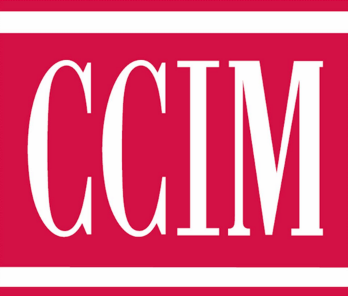Office Market Madness
Big money and aggressive investors chase deals in unexpected places.
By Beth Mattson-Teig
Tulsa, Okla., does not rank high on most commercial real estate experts' lists of hot office investment markets. In fact, the 44th largest U.S. city has wrestled with high vacancy rates for years and historically has been dominated by private local owners. But in the past year a number of newcomers, including investment groups from California and Texas, have turned to Tulsa and other unexpected markets in search of potential office investments.
"The top 30 markets have been so inundated with capital and people looking for real estate deals that markets like Tulsa have become interesting to sophisticated investors looking to get in before the market turns," says Patrick E. Coates, CCIM, marketing director/broker at Kennedy Wilson in Tulsa. Capitalization rates in the market are 100 to 200 basis points higher than those of comparable properties in Los Angeles or San Diego, he notes.
Coates brokered the sale of Tulsa's TechRidge Office Park to a Dallas-based investment group. The 550,000-square-foot property sold in June for $33 million with a cap rate slightly higher than 9 percent. "That is a prime example of outside investors looking at Tulsa and seeing the potential for growth and appreciation in our market," Coates says.
Although Tulsa's office sector was hit hard by the economic recession, buyers are taking note of improving market fundamentals: Office vacancies topped out around 22 percent in mid-2004 but as of May had dropped to 19 percent, Coates notes.
The scene in Tulsa is playing out in many secondary and tertiary markets across the country as escalating sales prices and plunging cap rates in major metropolitan areas are prompting investors to look elsewhere for higher returns. "In Southern California, you have a ton of money flowing into Phoenix and Las Vegas, and those markets are going bananas because cap rates are about 100 basis points higher," says John Hale, CCIM, SIOR, vice president and investment specialist at Colliers International in San Diego.
Nationally, office sales activity and pricing continue at a record-setting clip. Sales totaled nearly $43 billion in the first half of the year — a 23 percent increase compared to the $29 billion in properties that traded hands during the first half of 2004, according to Real Capital Analytics.
Investors flush with capital continue to drive prices higher and push cap rates lower. Suburban office properties have seen the biggest increases with prices rising 23 percent in the past year to a national average of $165 per square foot in the second quarter. At the same time, cap rates fell to 7.6 percent in the second quarter compared to the 8.0 percent average a year ago, according to Real Capital Analytics.
Central business district properties remain in demand, with average sales prices increasing 18.5 percent to $256 psf and cap rates holding steady at 7.4 percent.
Aggressive Buyers Nab Deals
Institutional investors are stepping up their efforts to land deals in secondary markets such as Indianapolis. "We had been seeing pretty healthy competition going on between the 800-pound gorillas — the pension funds and REITs — and local and regional partnerships," says Jonathan M. Hardy, CCIM, vice president of investment advisory services at Coldwell Banker Commercial in Indianapolis. But lately institutional players have become increasingly aggressive — and not just on pricing. They're also structuring terms to ensure they close deals.
For example, Hardy thought the 675,000-sf National City Center in downtown Indianapolis was a lock for the local buyer group his company was representing. The property was built in 1976, and most institutional players prefer newer properties. But in the 11th hour, Newton, Mass.–based HRPT Properties Trust came to the table with an unbeatable offer. Not only was the real estate investment trust competitive on pricing, but it was willing to put down $8 million in earnest money that was nonrefundable after four weeks with an additional two weeks to complete due diligence. HRPT landed the deal, closing on the $70 million purchase in six weeks. "My hat is off to them. It's tough to compete with such an aggressive deal structure," Hardy says.
The key to getting a leg up in this highly competitive environment is finding off-market opportunities, he adds. For example, One and Two River Crossing in suburban Indianapolis sold for $41.6 million in July as a result of an unsolicited purchase offer from a pension fund. The two office buildings, which include a covered parking structure, set a new sales price record in the suburban Indianapolis market of $203 psf.
Locating Viable Alternatives
It's no secret that quality properties in major metro markets are commanding top prices. For example, in Miami, New York, and Washington, D.C., office properties traded at average cap rates of less than 7 percent during first quarter, according to Real Capital Analytics. As a result, investors are continuing their quest for higher returns by forging into secondary and even tertiary markets.
For instance, Springfield, Mass., has experienced a spike in investor interest due in part to its proximity to major markets such as Boston and New York. "The western part of New England isn't always at the vanguard of market dynamics, but over the past 12 to 18 months we have seen an increase in sales and sale prices," says Mark A. Berezin, CCIM, CPM, president of Infinity Real Estate Group in Holyoke, Mass.
Berezin credits the Internet for helping to draw national investor interest. "There is more information out there, making investors more comfortable in becoming less geographically bound for investment choices," he says. Infinity began using its Web site to entice investors from New York and New Hampshire about five years ago, and these days the company is landing clients from as far away as California and Florida. The bulk of investors are private buyers seeking properties valued at less than $5 million. For example, Infinity recently represented a buyer from California looking to place $1.5 million in cash in a 1031 exchange.
The increasing competition is putting pressure on pricing. Springfield has posted double-digit increases in sales prices each year for the past few years, Berezin notes. Infinity currently is marketing the 55 State Street building in downtown Springfield for $1.8 million, or about $68 psf. The price on the 24,000-sf building is significantly higher than the $1 million the property sold for three years ago, even though the current owners have added $400,000 worth of improvements to the class B+ office property.
Investor demand for office buildings is so strong that there is even demand for vacant, half-finished property, Berezin says. Infinity is listing the 32,000-sf Prudential building in Holyoke for $800,000. A Boston investor purchased the building two years ago for $240,000 with plans to renovate and reposition the empty building. But the owner put the unfinished building up for sale after making about $400,000 in improvements.
Fort Myers, Fla., is another market that has experienced a surge in investor interest, especially since Lee County reached the 500,000 population mark last year. "It put us on the map for a lot of larger office users and investors," says Michael J. Frye, CCIM, owner and commercial investment specialist at Re/Max Realty Group in Fort Myers. The majority of investors — 65 percent to 75 percent — are private investors looking to complete 1031 exchanges, Frye says. "One of the biggest challenges in our market is finding the inventory. Some of the buildings we have had on the market are turning over once or twice. But many owners don't want to sell because they don't have a replacement property," he says.
Sellers Set the Pace
Clearly, the high pricing is encouraging some owners to put their properties on the block earlier than planned. "We're seeing a lot of people who would normally be long-term holds selling properties after a couple of years," says Jack Minter, national director of Dallas-based Trammell Crow Co.'s capital markets group.
Investors are taking advantage of rising values and turning over properties faster, agrees Ted Buenger, CCIM, an investment property broker at CB Richard Ellis Investment Properties in Bannockburn, Ill. For example, the 8501 West Higgins Road property in suburban Chicago sold in September 2001 for $100 psf and sold again in February for $143 psf — a 43 percent increase over 3.5 years, Buenger notes.
Although the huge demand makes it appear that investment properties are in short supply, the reality is that the sales market is extremely active. In Chicago, for example, office sales in 2004 increased 85 percent compared to 2003, and first-quarter sales were up 30 percent over the same period a year ago, Buenger notes.
One reason for the rise in transaction volume is that a number of institutions are opting to sell off all or a portion of their portfolios. Private owners also are selling, sometimes entering into creative joint ventures that allow owners to tap into a capital source while retaining ownership. In some cases they also hang onto management contracts, Buenger says. For example, earlier this year, Dallas-based Prentiss Properties Trust put a 2.9-million-sf office/industrial portfolio on the market and the company expects to retain part ownership, he adds.
In addition, "Sale-leasebacks were at a record level last year," he says, as corporations look to trade ownership for capital. "More corporate facilities are being sold, as corporations don't want to have their capital tied up in real estate."
Sales and pricing remain under pressure in areas where there is a limited supply of new buildings to buy. For example, mature markets such as San Diego lack available land on which to build new office properties. In addition, few owners are willing to put their properties up for sale because it is challenging to find quality replacement product. "Owners would love to take advantage of high prices and sell, but then they have to turn around and pay high prices in order to reinvest. It's almost like gridlock," Hale says.
Are Buyers Paying Too Much?
Many industry insiders question if buyers are paying too much for properties, particularly since office vacancies remain in the teens in many cities. "The market has been whipped into a foam at this point. We have been advising our clients to enter into that fray with a lot of caution," Hardy says.
"Every cycle has people buying properties that are wise and certainly some people are buying properties they shouldn't," Minter agrees. But for the most part leveraged returns are holding steady thanks to continued low interest rates. Historically buyers have paid about 400 basis points over the 10-year U.S. Treasury for real estate. Based on the current Treasury, which has been hovering near 4 percent, that creates an internal rate of return around 8 percent, he adds.
Some investors simply have adjusted their expectations to accommodate the higher pricing and are willing to take lower returns. Other buyers hope that improving office fundamentals will justify the higher prices. "San Diego does have rents ticking up and leasing velocity, so we have seen very aggressive underwriting," Hale says. The market is posting some of the lowest office vacancies in the country, with second quarter averaging 9.3 percent. In an effort to control property, some investors are willing to buy at a low return now and gamble that future rent increases will boost returns in a few years.
Still other buyers are seeking deals outside the overheated U.S. market. For example, opportunity funds have been buying in Europe and Asia for years. "Before they accept returns that we have here in the United States, they will go out and look for product all over the world," Minter says.
Voracious Demand Continues
The huge demand for office properties does not appear to be waning. Several factors have contributed to the rush for office investments, including signs that the economy is improving, which bodes well for office occupancies. "The job outlook continues to be favorable, albeit not nearly as robust as during the late 1990s," says Alan Pontius, national director of Marcus & Millichap's office and industrial properties group in Encino, Calif.
Despite the Federal Reserve Board's steady interest rate hikes over the past two years, long-term lending rates have moved very little, hovering around 4.1 percent at the end of July. "We continue to have a very favorable interest rate environment," Pontius says. In addition, capital continues to pour into real estate because there simply are no viable investment opportunities due to dismal stock market gains.
Office also is attractive right now because it is just beginning to move into its recovery cycle, signaling that now is the time to buy. "That is exactly the reason why investors are bullish today on Northern California, specifically the San Francisco Bay area," Pontius says. Investor interest in the Bay area is increasing rapidly, but not because of huge improvements in rental rates or occupancies. In fact, San Francisco continues to be one of the weakest office markets in the country with suburban vacancies at 20.8 percent. Many investors are banking on the fact that historically the area's office market has been strong and a recovery is underway, he says.
Elsewhere the looming office market recovery is prompting value-added buyers to bid for buildings despite significant vacancies. "Real estate, especially the suburban markets, has been suffering pretty severe vacancies for the last three years," Buenger says. However, those market conditions are beginning to turn. For example, in suburban Chicago, second-quarter vacancies dropped to 18.3 percent compared to 19 percent a year ago — a very positive sign.
While there have been distinctive signs that recovery is in motion, the competitive climate in today's marketplace also is forcing buyers to take a more aggressive — and optimistic — view, Pontius says. In this competitive bidding environment, certain transactions are closing in which projected yields will not be met if office vacancies and rents don't improve as anticipated. "There is a level of aggressiveness that stems from the belief that we are in an economic recovery and certainly a hope that the recovery will accelerate and be much more rapid going forward than it has been to date," he says.
Interest Rates: The Wild Card
Barring any unforeseen events, interest rates are the main factor that potentially could impact transaction activity. Even though there is a lot of talk about rising interest rates, "valuations are not going to change until there is some kind of sustained change in the level of the 10-year Treasury," Pontius says.
How high rates will have to rise to have an effect on the market and how quickly the impact will be felt are unknown. During the last two years, the Federal Reserve's gradual 0.25 percent interest rate increases have not had much of a cooling effect. As interest rates rise, investors appear willing to lower their return expectations. "We are getting to the bottom of that willingness to take lower returns and I think caps will have to tick up," Hale says.
Yet the most likely scenario in the coming months is that office properties will continue to trade at or above current levels. "There is a lot of money that is very eager to find a home in real estate," Pontius says. "Right now a 6 percent return in a real estate asset sounds pretty good in the global landscape of returns, especially if you believe there is building pressure on the income side of operations."





